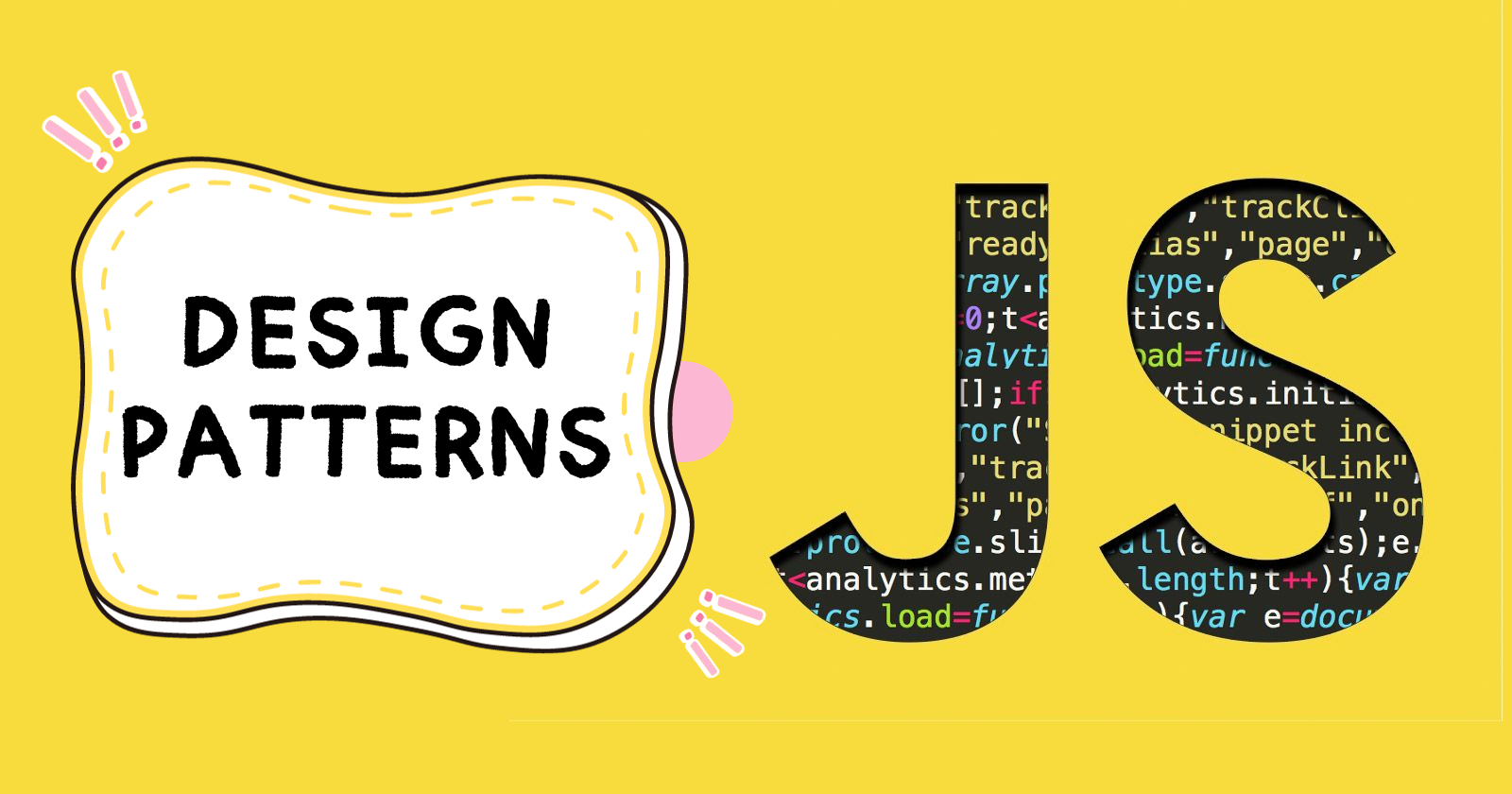JavaScript Design Patterns: Enhancing Code Reusability
 Hakeem Abbas
Hakeem Abbas
JavaScript is a versatile and powerful programming language. Its flexibility allows developers to create dynamic and interactive web applications. However, as applications grow in complexity, maintaining clean, efficient, and organized code becomes a challenge. That's where JavaScript design patterns come into play. In this article, we'll explore how JavaScript design patterns can enhance code reusability and improve the overall quality of your projects.
Understanding JavaScript Design Patterns
JavaScript design patterns are proven solutions to common problems encountered in software design. These patterns provide a structured approach to writing code, making it more organized, maintainable, and easier to understand. They help you avoid reinventing the wheel and encourage best practices in your development process.
Types of JavaScript Design Patterns
Creational Patterns:
Singleton Pattern
Factory Pattern
Constructor Pattern
Module Pattern
Structural Patterns:
Decorator Pattern
Adapter Pattern
Facade Pattern
Composite Pattern
Behavioral Patterns:
Observer Pattern
Mediator Pattern
Command Pattern
Strategy Pattern
Enhancing Code Reusability

1. Singleton Pattern
The Singleton Pattern ensures that a class has only one instance and provides a global point of access to it. This pattern is useful when you want to limit the number of objects created from a class, such as managing a single configuration object throughout your application.
2. Factory Pattern
The Factory Pattern defines an interface for creating an object but allows subclasses to alter the type of objects that will be created. This promotes loose coupling and makes your code more extensible.
3. Observer Pattern
The Observer Pattern allows a subject to notify its observers about changes without knowing who or what those observers are. This is invaluable for implementing event handling and data-binding in your application.
4. Module Pattern
The Module Pattern encapsulates a set of methods and attributes within a single, self-contained object. This promotes information hiding, reducing the risk of global variable conflicts and enhancing code isolation.
Structural Patterns:
Decorator Pattern: The Decorator Pattern allows behavior to be added to an individual object, either statically or dynamically, without affecting the behavior of other objects from the same class. This pattern is useful when you want to add functionalities to objects without altering their structure.
Adapter Pattern: The Adapter Pattern allows the interface of an existing class to be used as another interface. It is often used to make existing classes work with others without modifying their source code. This pattern helps achieve interoperability between different interfaces or classes.
Facade Pattern: The Facade Pattern provides a simplified interface to a complex system, making it easier to use. It acts as a unified interface that provides a higher-level interface that makes the subsystems easier to use and understand. This pattern is beneficial for providing a simple interface to a complex system or set of interfaces.
Composite Pattern: The Composite Pattern composes objects into tree structures to represent part-whole hierarchies. It lets clients treat individual objects and compositions of objects uniformly. This pattern is useful when you want to represent part-whole hierarchies in your application and work with both individual objects and groups of objects in a uniform manner.
Behavioral Patterns:
Observer Pattern: The Observer Pattern defines a one-to-many dependency between objects so that when one object changes state, all its dependents are notified and updated automatically. It is used when there is a one-to-many relationship between objects, and changing one object causes changes to occur in other objects.
Mediator Pattern: The Mediator Pattern defines an object that encapsulates how a set of objects interact. It promotes loose coupling by keeping objects from referring to each other explicitly and allows you to vary their interaction independently. This pattern is helpful when you have a set of objects that need to communicate in complex ways.
Command Pattern: The Command Pattern encapsulates a request as an object, thereby allowing you to parameterize clients with queues, requests, and operations. It also allows you to support undoable operations. This pattern is useful when you want to parameterize objects with operations, queue requests, or support undoable operations in your application.
Strategy Pattern: The Strategy Pattern defines a family of algorithms, encapsulates each one, and makes them interchangeable. It lets the algorithm vary independently of clients that use it. This pattern is useful when you want to define a family of algorithms, encapsulate each one, and make them interchangeable within a context.
Practical Benefits of JavaScript Design Patterns
Code Reusability: Design patterns help you reuse proven solutions for common problems, reducing redundancy in your code.
Improved Code Quality: By following established patterns, your code becomes more organized, readable, and maintainable.
Simplified Maintenance: When issues or updates arise, patterns make it easier to locate and fix problems in your code.
Collaboration: Design patterns establish a common language for developers, making it easier to work together on projects.
Scalability: As your application grows, design patterns make it easier to add new features without disrupting existing functionality.
Conclusion
JavaScript design patterns are powerful tools for enhancing code reusability and improving the overall quality of your projects. By understanding and implementing these patterns, you can write more efficient, organized, and maintainable code. Whether you're a seasoned developer or just starting with JavaScript, incorporating design patterns into your coding practices is a crucial step toward becoming a more effective and efficient programmer.
For further reading and resources on JavaScript design patterns, check out the following references:
With these resources, you can deepen your knowledge of JavaScript design patterns and leverage them to write cleaner and more reusable code in your projects.
Coding Crafts: Your Trusted
Your premier destination for custom software development. Technology is the driving force behind businesses, having a reliable and innovative development partner is essential. At Coding Crafts, we pride ourselves on being a leading custom software development company in the USA, dedicated to delivering cutting-edge solutions that empower your digital presence.
At Coding Crafts, we understand the importance of staying ahead in the digital landscape. With a team of skilled and experienced developers, we offer a range of services to meet your unique needs.
Custom Software Development
As a custom software development company in USA, we specialize in crafting tailored solutions that meet your business objectives. Our team works closely with you to understand your specific requirements, ensuring that the software we create is precisely aligned with your vision.
From streamlining internal processes to developing customer-facing applications, we cover a wide spectrum of software development needs. Our commitment to quality and innovation results in user-friendly, scalable, and secure software that drives your business forward.
Subscribe to my newsletter
Read articles from Hakeem Abbas directly inside your inbox. Subscribe to the newsletter, and don't miss out.
Written by

Hakeem Abbas
Hakeem Abbas
Hakeem Abbas is a Software Engineer based in San Francisco, Bay Area. Besides building beautiful web and mobile applications that scale well, Hakeem likes to spend his time travelling, hiking and trying new restaurants.